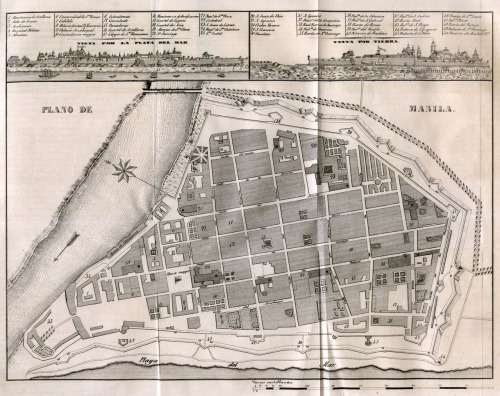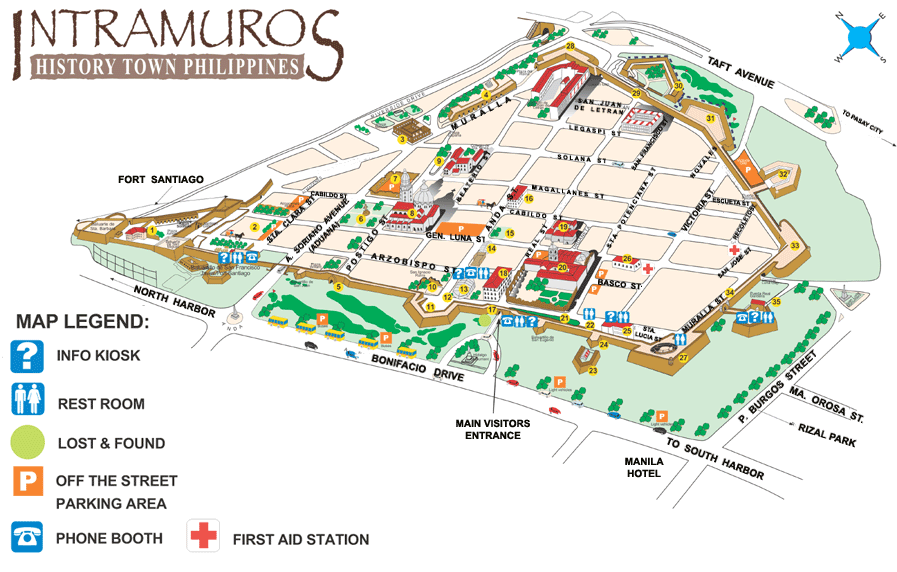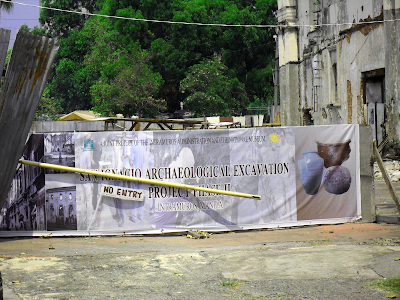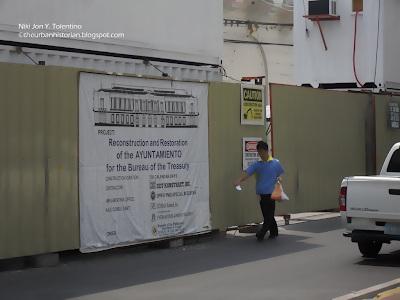The city literally bloomed out of Pasig River, where the Islamic Kingdom of Maynilad existed as a Fortress with wooden walls until Miguel Lopez de Legaspi invaded the city, 1571.
The current stone walls existing today was only built starting 16th century, with a height of 6 meters and a width of more than a hundred meters, the walls surely gives the city an invulnerable protection.
In the Spanish Period, the enclosure itself marks the whole of the city. The outlying areas (Ermita, Malate, Binondo, San Nicolas, Santa Cruz) were just arraballes of suburbs. Expansion only started in the latter period of Spanish Rule.
The walls survived numerous earthquakes and fires, but not the Battle of Manila in 1945, which reduced the Beautiful City into a piece of Rubble.
Restoration works started after the war, in which the Manila Cathedral is the first to be restored. Intramuros Administration was solely in charge of the restoration and urban plans of the walled city.
Currently, numerous buildings have been restored to their full grandeur and glory and more still awaits.
Plan of Intramuros, 1851, Map source here
Plan of Intramuros, 1898, map source here
contemporary map of Intramuros, map source here
There is a current archaeological excavation in Colegio de San Ignacio Ruins, the first College in the Country.
Ayuntamiento, the city government of the Spanish Times. The old Ayuntamiento building is currently being restored for the use of the Bureau of Treasury, I can't wait to see it.

The old ayuntamiento building, photo source
Palacio Grande, just near the Cathedral
Casa Manila, houses business establishments and a museum.
Manila Cathedral, the main church if the Archdiocese of Manila, this is the seventh structure to be constructed.
Palacio del Gobernador, currently houses the COMELEC, then the residence of the Spanish Governor General.
Plaza Roma and King Carlos VI. Named Plaza Roma in Tribute to Rome, in the celebration of the elevation of the First Filipino Cardinal to Rome. That was Cardinal Rufino Santos.

















thank you for the links and sources of pictures it helped me a lot in my planning subject!!!
ReplyDeletetreatment for mild fatty liver treatment for mild fatty liver treatment for mild fatty liver
ReplyDeleteHave a look at my blog post ... liver fat home remedy